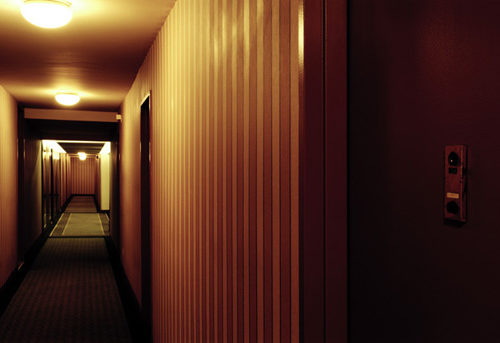Götz Göppert is a German photographer based in Paris. He is one of those photographers who manage to balance professional work and personal projects. Recently exhibited at the Maison Européenne de la Photographie for his series Les quatre saisons, his latest show presents a series of panoramic photographs taken in New York. We met with Göppert to speak a little about his work.
How did you first come to photography?
By chance, really. I did an internship with a photographer when I was about 20. [Today Götz Göppert is 42.]
I became an assistant photographer in Germany. I went sailing and when I came back I told myself I needed to find something a little more serious, so I became a photographer. Okay, it’s not too serious… At first I was an assistant in commercial photography, very fashion-oriented. Then in 1996 I started working as a photographer.
I traveled to Brazil, South Africa..so many beautiful surroundings. Lots of traveling. On trips like this you spend a lot of time waiting in the morning, the girls put on make-up, get dressed early, etc. I wanted to show that, to capture it with photography. I looked at different formats before I found 6×17 and 6×24, which are fantastic for panoramic photography.
Then I lived in New York, and the city lends itself to being photographed. I wasn’t working much at the time so I was able to take pictures. I remember selling my first print to a guy, I had randomly shot his apartment.
You’re also a fashion photographer?
Yes. Well, I used to do a lot of fashion shoots and catalogues. Since then it’s slowed down a bit, things change. I started working more in beauty and cosmetics, with very natural-looking skin and body close-ups. Sometimes I do a little lingerie.
Film or digital?
For my own projects I use film because there’s no digital equivalent for the formats I like. And the quality is excellent. But digital is more suitable for work.
In terms of color rendering, do you use a special treatment?
No, film is like that, not that much retouching, just a slight color correction during development, which corresponds to the slide. No treatment, nothing. The technical aspect is very classical.
Tell me something about your subjects. Why did you choose to photograph deserted cities, empty spaces and cars?
We’re constantly surrounded by people. Sometimes it feels good to be alone, no radio, no TV, no people, etc.
Also, on pictures like this, people tend to age age very badly. They’re linked to an era with certain hairstyles, clothing and everything. For example, there’s a photo of a guy in a tracksuit. Great. But what am I supposed to do with with a guy with a tracksuit? Even though I like people, I find them rather ugly. And technically, with this camera, I use very long exposures, so sometimes there are streets where people walk by but you don’t see them on the film.
So it’s a choice…
I want my photos to be timeless. It’s something that I realized quite late. For example, a picture taken in the 60s of an old car could just as well have been taken today.
Ten years ago, when I started doing panoramic, I was mainly shooting outdoor landscapes. It was only when I arrived in New York that I realized it could be interesting to work in cities. I also realized that it would work for interior shots of hotel rooms, kitchens, refrigerators… It’s a format that can be used almost anywhere.
Why the cars?
Cars are everywhere around us, all the time. I realized that while doing the panoramic shots, they’re always there. Here too I used a square format.
Are there certain photographers who have influenced you?The cars could make one think of Gregory Crewdson, even if the process is different.
Gregory Crewdson? I’m not sure. Yes, Crewdson is all about staging, everything is so controlled, what he does is very beautiful. But nothing I photograph is staged, I take things as they are. I love the great American photographers like Stephen Shore, Edward Weston, Walker Evans and Irving Penn of course. And I love Elger Esser! And Ansel Adams for his black-and-white landscapes. I think that I’m more influenced by cinema.
Right, for the empty city theme. It made me think a little of Vanilla Sky…
People usually mention Blade Runner when talking about the environment. I like going to the cinema for inspiration, to get ideas. Plus, the format is a little cinematographic. The series of corridors is a little reminiscent of The Shining, for example…
What’s your next project?
I’m going to Iceland soon to take pictures, and I’ve been invited to Johannesburg for an exhibition in the Fall.
Interview by Juliette Deschodt.
EXHIBITION
May 22 – 28
Congrès 2012 de la Fédération Photographique de France
Espace Daniel Sorano 16, rue Charles Pathé
94300 Vincennes
France
REPRESENTATION
Galerie Superflu
26 rue Saintonge
75003 Paris
France
















